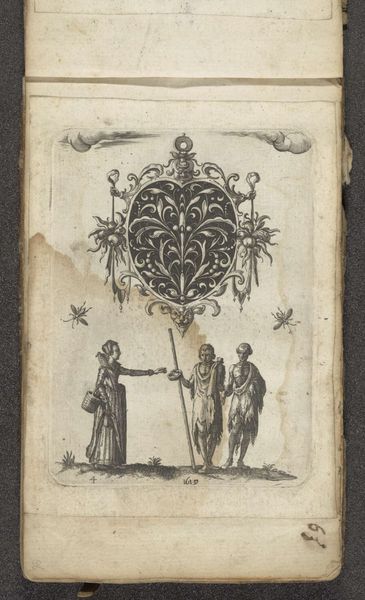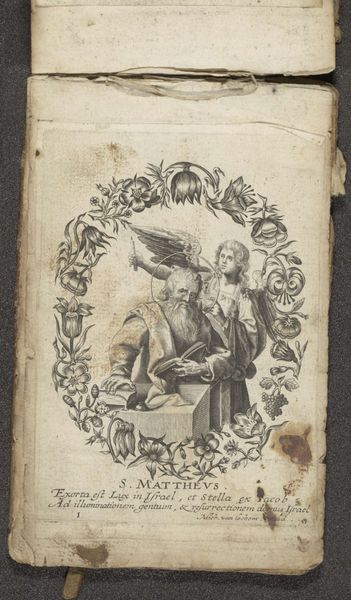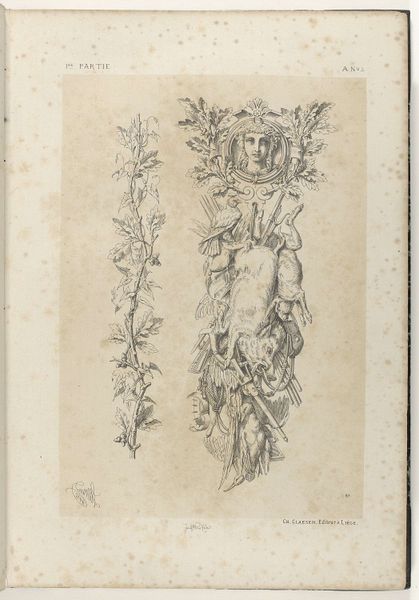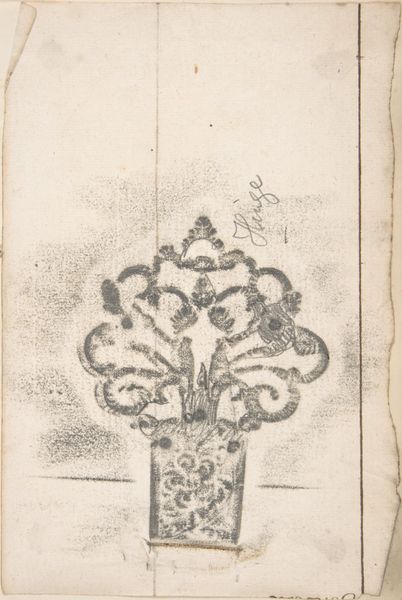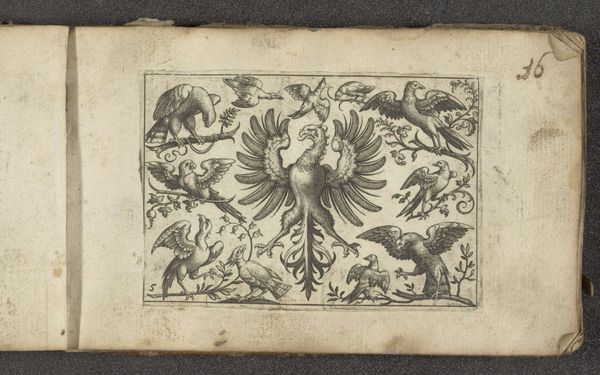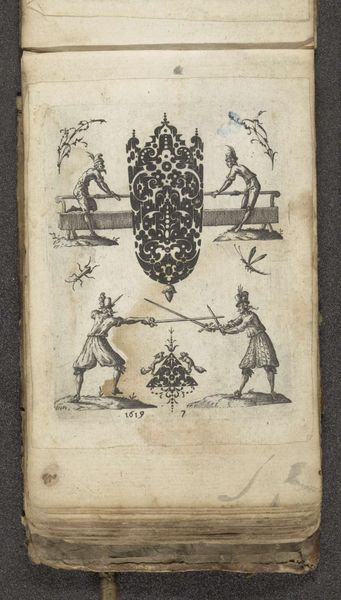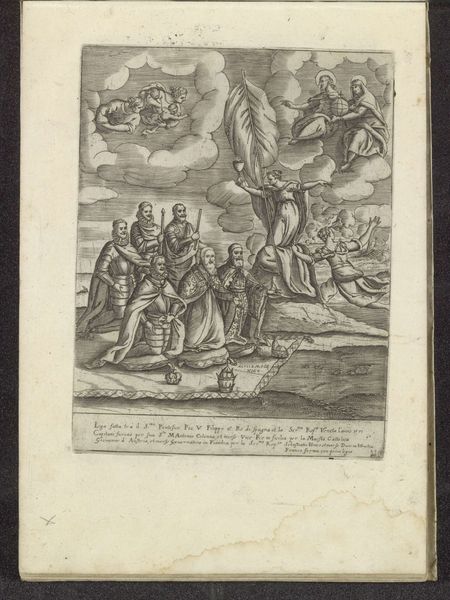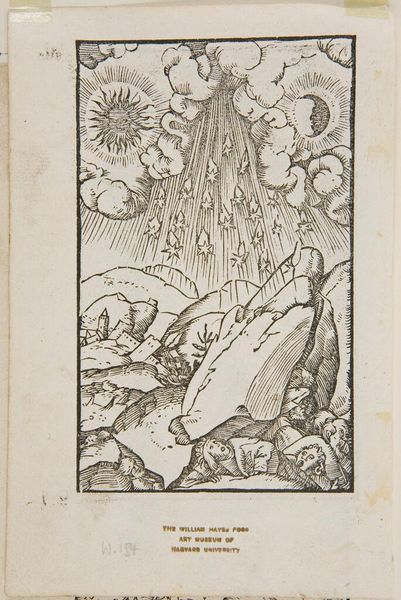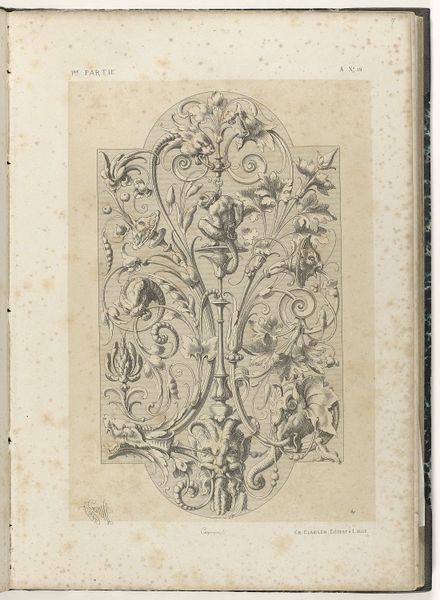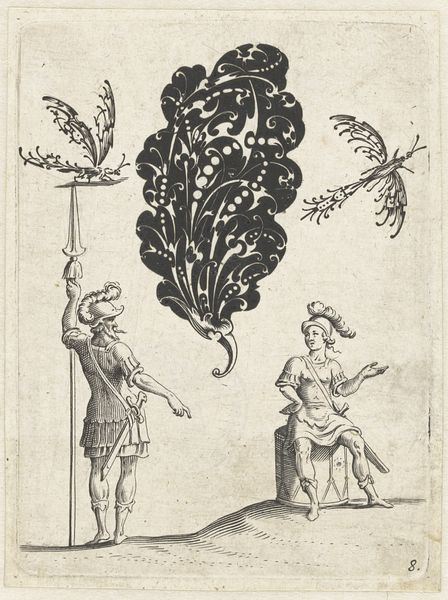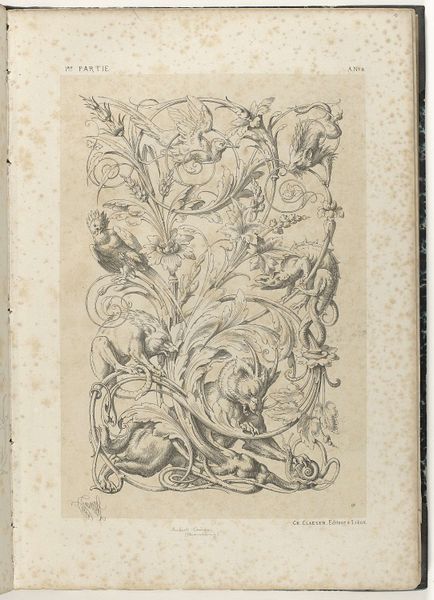
drawing, paper, ink, engraving
#
drawing
#
mannerism
#
figuration
#
paper
#
ink
#
coloured pencil
#
engraving
Dimensions: height 108 mm, width 80 mm
Copyright: Rijks Museum: Open Domain
Editor: Here we have "Zwartornament in de vorm van een eikenblad," a drawing made with ink, engraving and coloured pencil on paper by Jean Toutin, dating back to 1619. I’m immediately struck by its intricate detail—it feels so meticulously crafted. How do you interpret this work within its historical context? Curator: This piece invites us to consider the dialogue between nature, ornamentation, and the evolving role of art in early 17th-century Europe. Consider how the idealized, almost fantastical depiction of nature here might be reflecting, or perhaps resisting, the socio-political realities of a society grappling with issues of power, wealth, and identity. How does the inclusion of figures within a seemingly decorative work complicate its function? Editor: That’s interesting. I hadn’t considered that the figures might be doing more than just adding to the composition. Could it be commenting on social hierarchies, maybe? Curator: Precisely! The figures, seemingly placed in the landscape, appear to carry symbolic meaning that intertwines ideas related to class. Think about how such visual statements could function during a time when social mobility was limited and the control of natural resources was a key indicator of influence and power. Is the artist perhaps questioning this control? Editor: It's amazing how a seemingly simple drawing can contain so many layers of meaning. I definitely see now how important it is to analyze art through the lens of the time it was created, paying close attention to all its possible cultural narratives. Curator: Absolutely. By connecting art history to our modern understandings of gender, class, and power, we uncover histories relevant to our society.
Comments
No comments
Be the first to comment and join the conversation on the ultimate creative platform.
